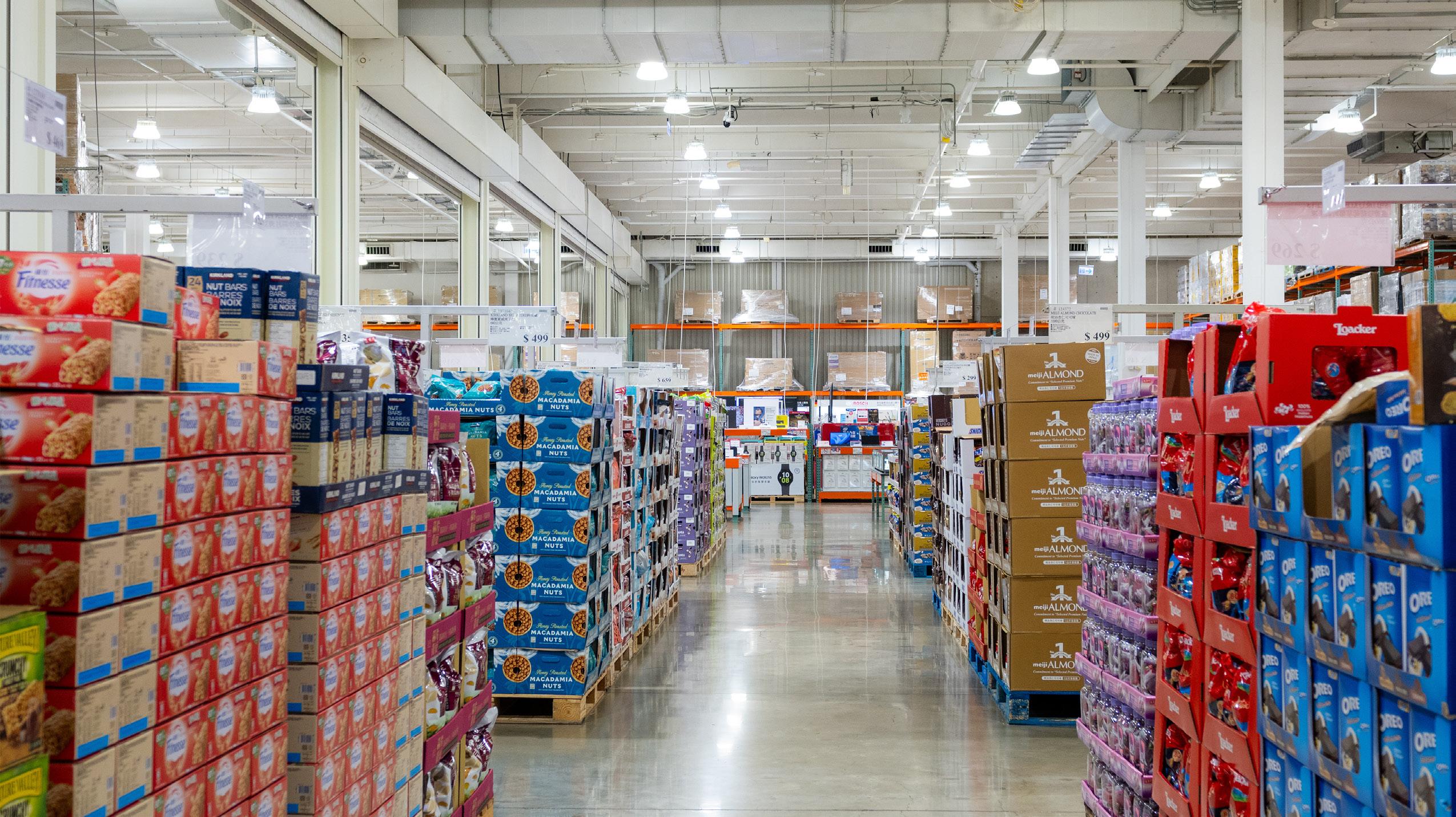

RENTAL GROWTH RAMPING UP DESPITE UPTICK IN BANKRUPTCIES
As of the close of Q3 2024, overall shopping center vacancy in the Sacramento region stood at 7.6%, down slightly from the 7.8% rate of three months ago. One year ago, this metric stood at 7.9%. The market recorded positive net absorption of 96,000 square feet (SF) in Q3. Occupancy growth has remained in positive territory in two of the past three quarters, with the market having absorbed 221,000 SF of product year-to-date. This is even though retail bankruptcies are up 50% in 2024 and at least one major data tracking firm, Coresight Research, has stated that store closures will outpace store openings in 2024 for the first time in four years. Yet occupancy growth in Sacramento is up, vacancy is down and our brokers report an active deal pipeline in which the greatest challenge for most active space users is the challenge of finding available quality space. So, what gives?
RESTAURANTS, SERVICES, ENTERTAINMENT AND NONTRADITIONAL TENANTS DRIVING NATIONAL GROWTH
Something that has become abundantly clear since the 2020 pandemic is the incredible resiliency of the American retail marketplace. Following the immense challenges of that year, few in the market foresaw the rebound in physical retail space demand that would occur over the next few years. Virtually none anticipated the strength of that rebound, which would drive retail vacancy rates below levels not seen in more than a decade.

By 2024, retail was arguably the darling of commercial real estate. With office in a freefall and industrial demand cooling, retail leasing remained robust. While the higher cost of money has chilled investment activity across all commercial real estate property types, shopping centers remained the most active sector. This was partially due to strong underlying fundamentals. It’s also because retail investments didn’t experience the same run-up in pricing and cap rate compression as other property types. This has meant that for the last couple of years retail real estate offered investors the best potential returns.
But in 2023, following two years in which there were almost no major retailer bankruptcies, the market experienced two of the largest chain store collapses in decades. The liquidation of Bed, Bath & Beyond (and affiliated banners), and the Chapter 11 reorganization of the drug store chain Rite Aid together accounted for the return of nearly 40 million square feet (MSF) of space to market (with most of Rite Aid’s space givebacks occurring in 2024). This trend has only intensified heading into 2024.

While none of 2024’s most notable retail bankruptcy filings (Rue21, Express, 99 Cents Only Stores, Conn’s HomePlus, LL Flooring, etc.) have individually been as large as the BB&B and Rite Aid bankruptcies, the number of distressed chains either liquidating or seeking debtor protection has increased by more than 50% in the past year. Meanwhile, according to chain store tracking firm Coresight Research, for the first time since 2020, store closures from traditional merchants are outpacing planned store openings, albeit only slightly.
Though retail sales have remained in positive territory since 2020, the impacts of the recent inflationary wave and resultant money tightening policies, have taken a toll. August retail sales were up 2.1% year-over-year, but monthly gains increased only 0.1% and have been in negative territory in four of the previous 12 months. Meanwhile, American consumers now owe a record 1.1 trillion dollars on their credit cards, 45% more than they did in early 2021. Additionally, the average interest rate on that debt now stands at 24.5%, compared to 16.7% in 2021. All of this would seem to suggest that retail may be at an inflection point heading into 2025. Or is it?
While it may be true that traditional retail merchants may be closing more units than they are opening in 2024, overall occupancy growth trends remain in positive territory. According to data from the Costar Group, as of Q2 2024, retail vacancy levels in 57 of the top 65 US retail markets were at 15-year lows. As the head of leasing for one major US retail REIT told us, “Most of
the retail bankruptcies we have seen in 2024 have such active interest from expanding concepts that it has not been a major concern. For the most part, we are backfilling space quickly at today’s higher lease rates. Particularly if we are talking about spaces of less than 5,000 square feet (SF) or junior boxes in the 20,000 to 35,000 SF range, there is a solid pool of active growth tenants.”
This year, while we have seen our share of media sources reverting to the “retail apocalypse” clickbait storylines of a few years ago, we don’t see the recent uptick of retail bankruptcies as being a return to the trends of just a few years ago but as a return to more normalized patterns of winners and losers in the retail space. With more than 75 major chains having filed bankruptcy in 2020, it was only natural that filings would fall to record lows in the years immediately following. Retail’s ugly bandage had been ripped off all at once with the pandemic. Yet, for the most part, this recent wave of bankruptcies isn’t indicative of either structural challenges (the impact of eCommerce, for example) or even cyclical ones (though inflation has taken a toll, retail sales have remained in growth mode overall). The only exception to this would be the current challenges facing the drug store category.
So, who exactly is driving leasing activity today? While off-price apparel, grocery stores, fitness clubs and discount store concepts all continue to aggressively seek second generation
and
The restaurant sector remains in aggressive expansion mode, with fast food and new fast casual concepts leading the way. While coffee, chicken, dessert drink (boba) concepts remain among the QSR categories putting up the strongest growth numbers, evolving consumer tastes are driving an explosion of new culinary concepts inspired by cuisines from across the globe. According to the Brown Book Guide to Retail and Restaurant Tenants, there are now more than 2,000 QSR concepts alone in growth mode active in the US, with plans to open nearly 11,000 units in 2024.
This growth trend includes casual dining concepts—a category of restaurants that has largely struggled in recent years. Despite recent bankruptcies from legacy chains like Red Lobster or Buca di Beppo, a new wave of casual dining concepts is largely backfilling vacancies left by many decades-old concepts that have struggled to remain relevant among shifting Millennial and Gen-Z consumer tastes. As one hospitality expert told us, “From Korean BBQs to chef-inspired or craft-brew focused concepts, we are seeing a changing of the guard in the casual dining space with many legacy brands struggling to remain relevant.” Restaurant openings among casual dining concepts are now outpacing closures by a rate of 2:1.

Meanwhile, urgent care and veterinary clinic demand has tripled over the past couple of years thanks largely to the recent trend of major private equity investment.
DEVELOPMENT TRENDS
The rise of non-traditional space users, one of the reasons why the demand pendulum has swing so wildly back in favor of landlords in recent years has been that retail development still simply does not pencil in most parts of the country. By the close of 2024, there will be roughly 50 million square feet (MSF) of new shopping center product added in the US, up slightly from the 35 MSF of space delivered in 2023. But keep in mind that between
Experiential concepts and Medispas, categories that largely didn’t exist a decade ago (at least not in their modern contexts) are also where we see some of the most aggressive expansion. Entertainment concepts ranging from arcades to miniature golf have been around for decades, but the market continues to benefit from an unprecedented explosion of new experience-focused concepts in growth mode. There are more than 50 pickleball concepts alone actively expanding in the US. Most of these chains are taking large blocks of space with some backfilling vacant mall anchor spots.
Source:GallelliRealEstate;CostarGroup
2008 and 2020, the market averaged 61 MSF of new product annually and more than double that from 1998 through 2007. Yet construction costs are still 30% to 40% above pre-pandemic levels, and though rents are growing they have not kept up with development costs. The net result is that it remains a challenge getting new shopping center development to pencil.
Planned growth from experiential concepts (which include everything from competitive socializing concepts, “eatertainment,” amusement chains and interactive art installations) could drive as much as 15 MSF of occupancy growth nationally through the end of 2025. While this has been a positive story in terms of occupancy growth so far, it is not without some concern. While these concepts often open to a lot of fanfare and consumer interest, the jury is out as to how long some can maintain momentum and relevancy, especially if their locations don’t benefit from strong tourism trade.
Meanwhile, the market is seeing a surge in quasi-medical users. Since 2018, aesthetics-focused Medispas (where treatments can range from traditional spa beauty care to Botox, cryotherapy and other cutting-edge procedures) have doubled in the US with nearly 10,000 now in operation and the emerging sector adding an average of 1,500 new locations annually the last two years.
This certainly has been the case in Sacramento where developers have added 188,000 SF of new shopping center space to the local inventory so far in 2024, mostly in the form of additional pad buildings at existing shopping centers. The market will end the year with close to 250,000 SF of new retail space, or roughly the same amount of development it has recorded in each of the past four years. Keep in mind that from 2002 through 2007, Sacramento averaged more than 2.5 MSF of new shopping center development annually.
Rental rate growth has picked up in 2024. The current average asking rent for shopping center space in the Sacramento region is $2.15 per square foot (PSF), on a monthly triple net basis. This number has increased by 4.9% over the past year and has outpaced all other commercial real estate product types in the region. While we anticipate continued upward pressure on rents to gradually pave the way for more local retail development, this process will likely take a couple of years.


We are currently tracking 309,000 SF of space in the new development pipeline—most of which is slated for 2025 delivery and nearly all of which is in the form of long-planned additional phases or pad buildings at existing centers. We are aware of just one major new planned shopping center about to begin construction—the 744,000 SF Baseline Marketplace center in Roseville. Phased development of this Costco-anchored power center is set to start in early 2025 with deliveries starting in 2026.

















